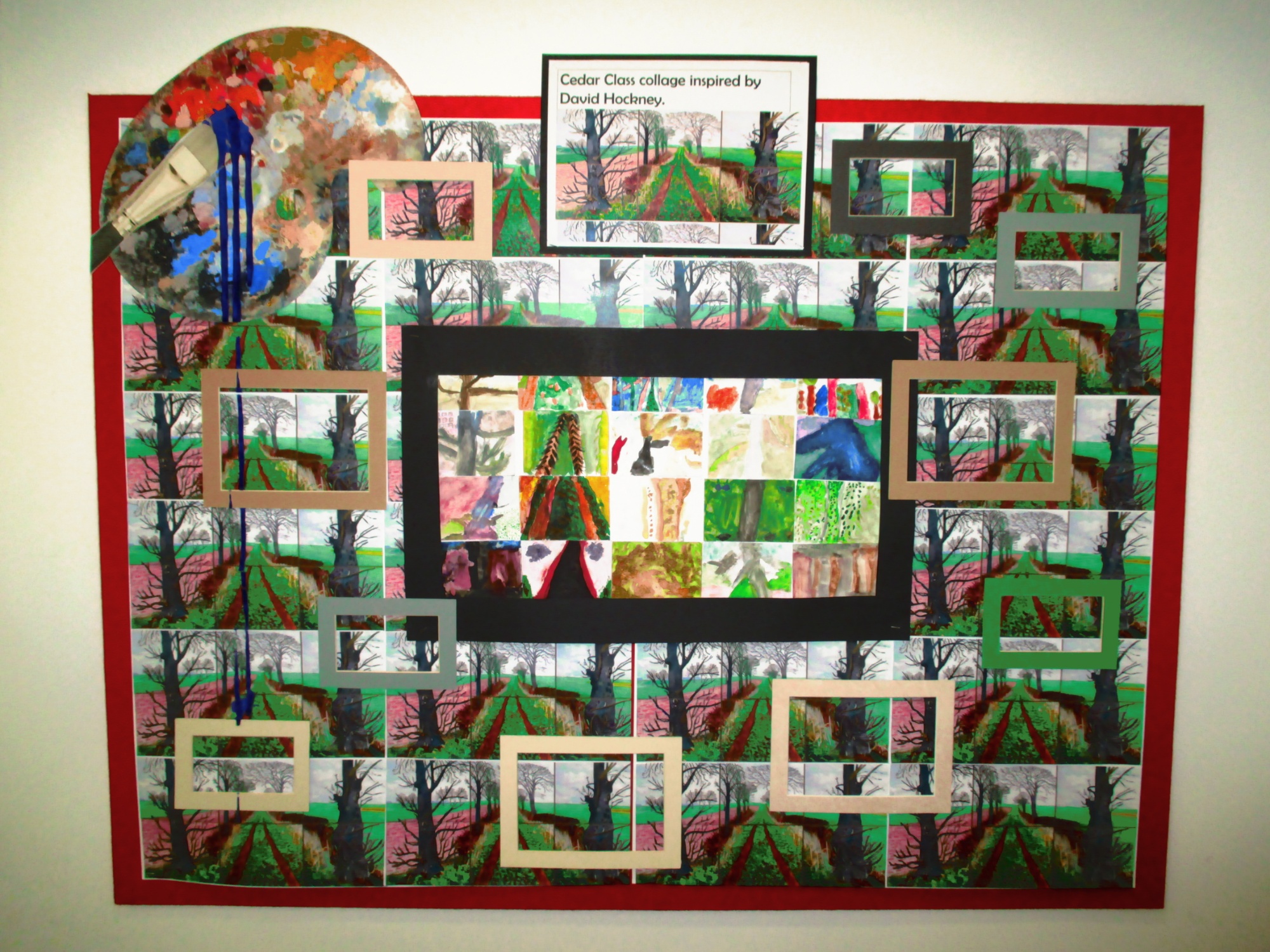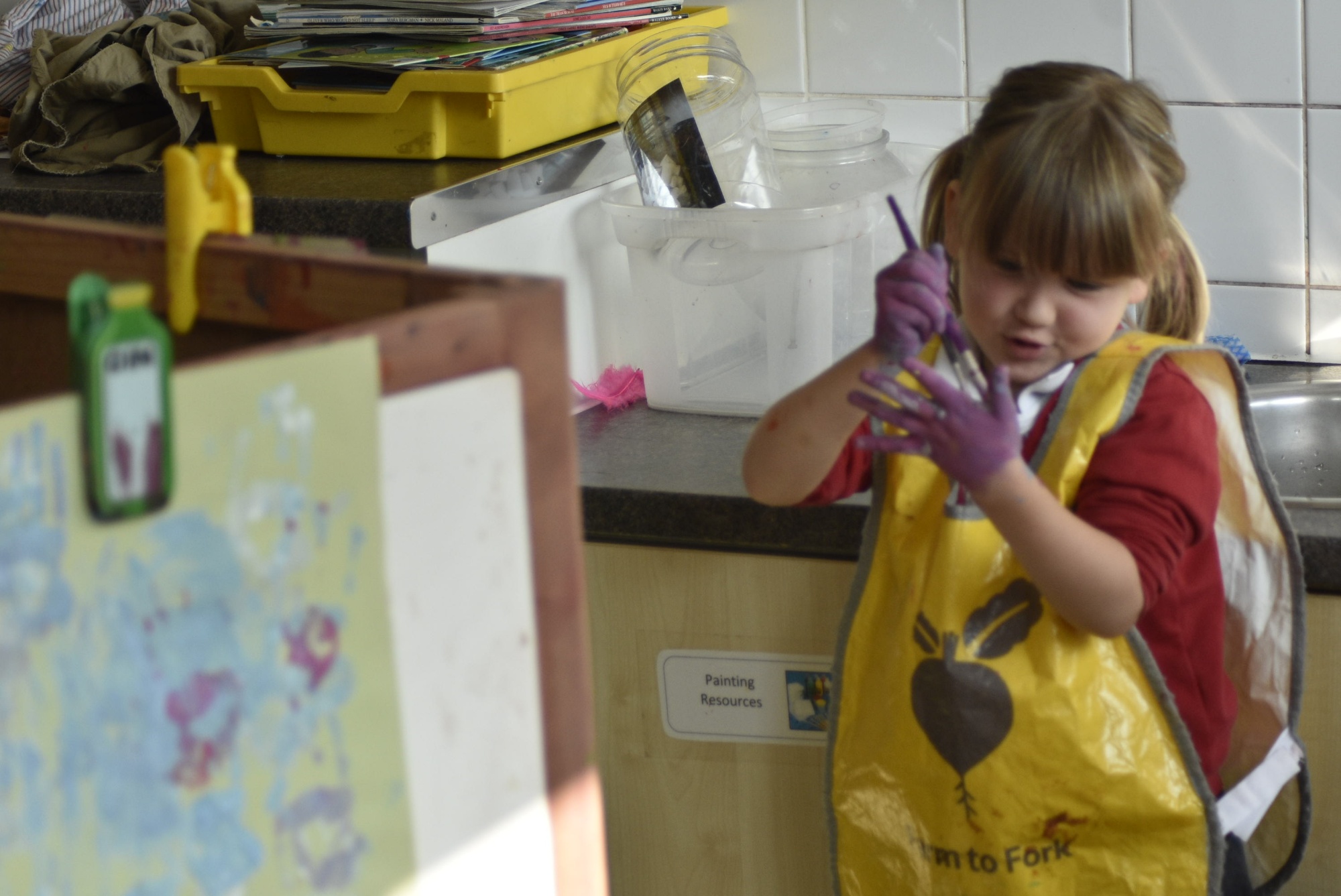Art
Intent - What are we trying to achieve with our curriculum?
At Twydall Primary School, we believe that art is a vital and integral part of children’s education. It provides them with opportunities to develop a range of ways in which they can share and express their individual creativity, whilst learning about and making links with a wide spectrum of different types of art in our society. Art contributes to children’s personal development in creativity, independence, judgement and self-reflection. Moreover, it enables pupils to develop a natural sense of wonder and curiosity about the world around them and therefore links strongly to our school values. The focus is in developing proficiency in drawing, painting, understanding colour and shade and sculpture, with the overall aim of developing a rigorous understanding, critical awareness and inspiration of art and design. The art curriculum will develop children’s critical abilities and understanding of their own and others’ cultural heritages through studying a diverse range of male and female artists throughout history. Children will develop their understanding of the visual language of art with effective teaching and carefully thought-out sequences of lessons and experiences. Understanding of the visual elements of art and design (line, tone, texture, colour, pattern, shape, 3D form) will be developed by providing an accessible and engaging curriculum which will enable children to reach their full potential.
Implementation – How is our curriculum delivered?
EYFS
Through Expressive Arts children are encouraged to explore different media, explore how media can be combined to create different effects and develop a range of skills and techniques experimenting with colour, design, texture, form and function. Children are given daily access to a range of creative opportunities and enjoy our carefully planned and well-resourced creative areas. Children are encouraged to create on both small and large scales. Children are encouraged to develop their communication and language skills through talking about their creations and sharing these with others to build confidence and raise self-esteem.
KS1/KS2
The teaching and implementation of the Art and Design Curriculum at Twydall Primary School is based on the National Curriculum and linked to topics to ensure a well-structured approach to this creative subject. We teach a skills-based art curriculum, which allows children to express their creative imagination as well as providing them with opportunities to practise and develop mastery in the key processes of art: drawing, painting, printing, textiles and sculpture. This is supported through the studying of artists and the development of a knowledge of their work. Lessons are taught in blocks on a half termly basis and involve studying existing pieces of art, sketching aspects of these, with a particular focus on the necessary skills, before completing a final piece. The children will then be given constructive feedback and next steps, with further opportunities to create the art piece, to improve their work and ensure that the skills are being developed. The evidence of their work is collected within the art sketch book which follows the children through the school. Photographs of larger, group or 3D pieces are also kept within this book.
Impact – How do we know?
By the end of their time with us, we want children to have learned, improved and embedded a range of artistic skills. They should have an awareness of a broad range of artists and be able to consider and discuss the artworks they come across. We want the children to be confident to explore, experiment and take risks, placing value on the process and journey that they take, not just on the finished product. Most importantly, we want children to have found and enjoyed a creative outlet – a means of self-expression and enjoyment.
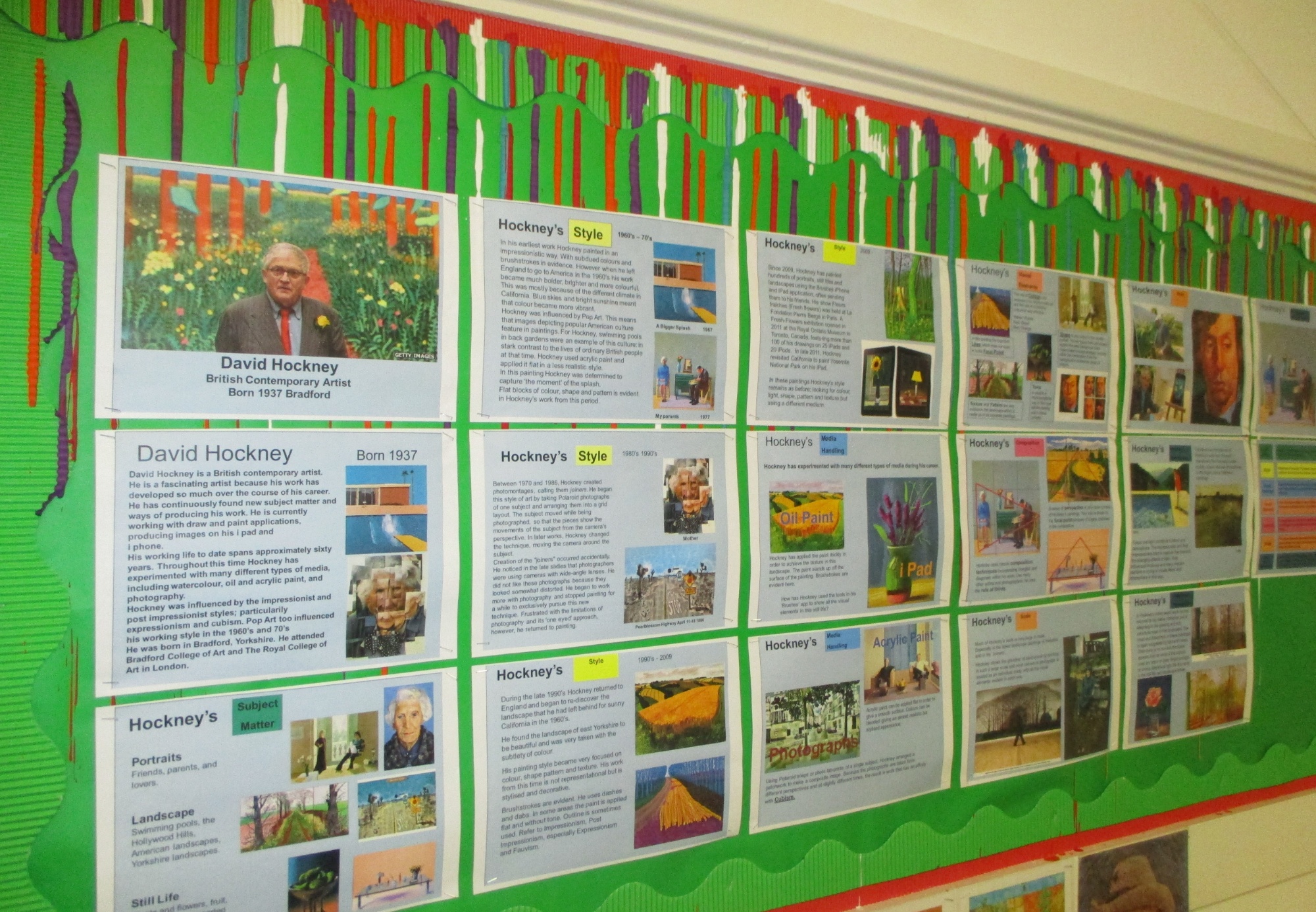
David Hockney display
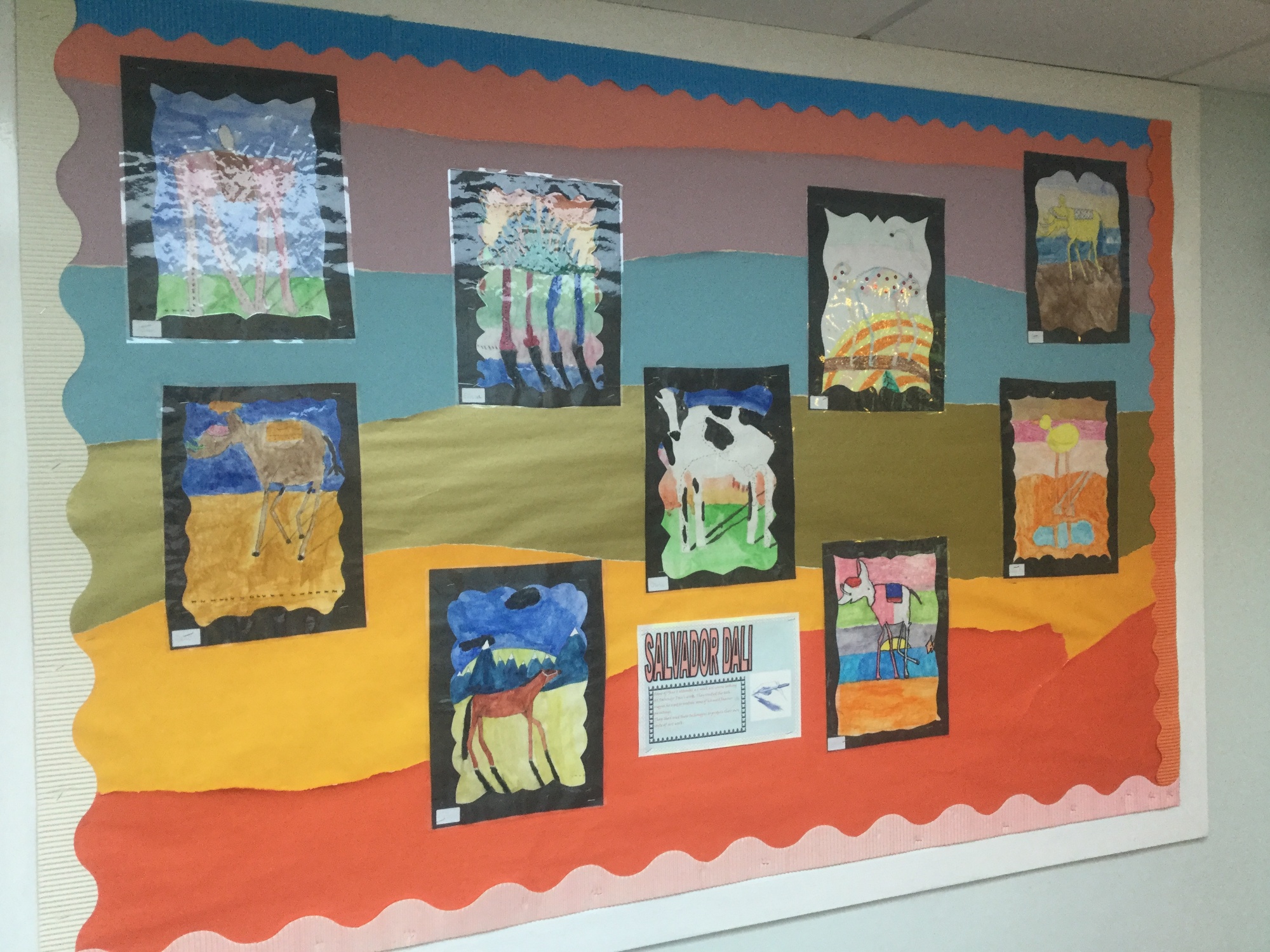
Salvador Dali display
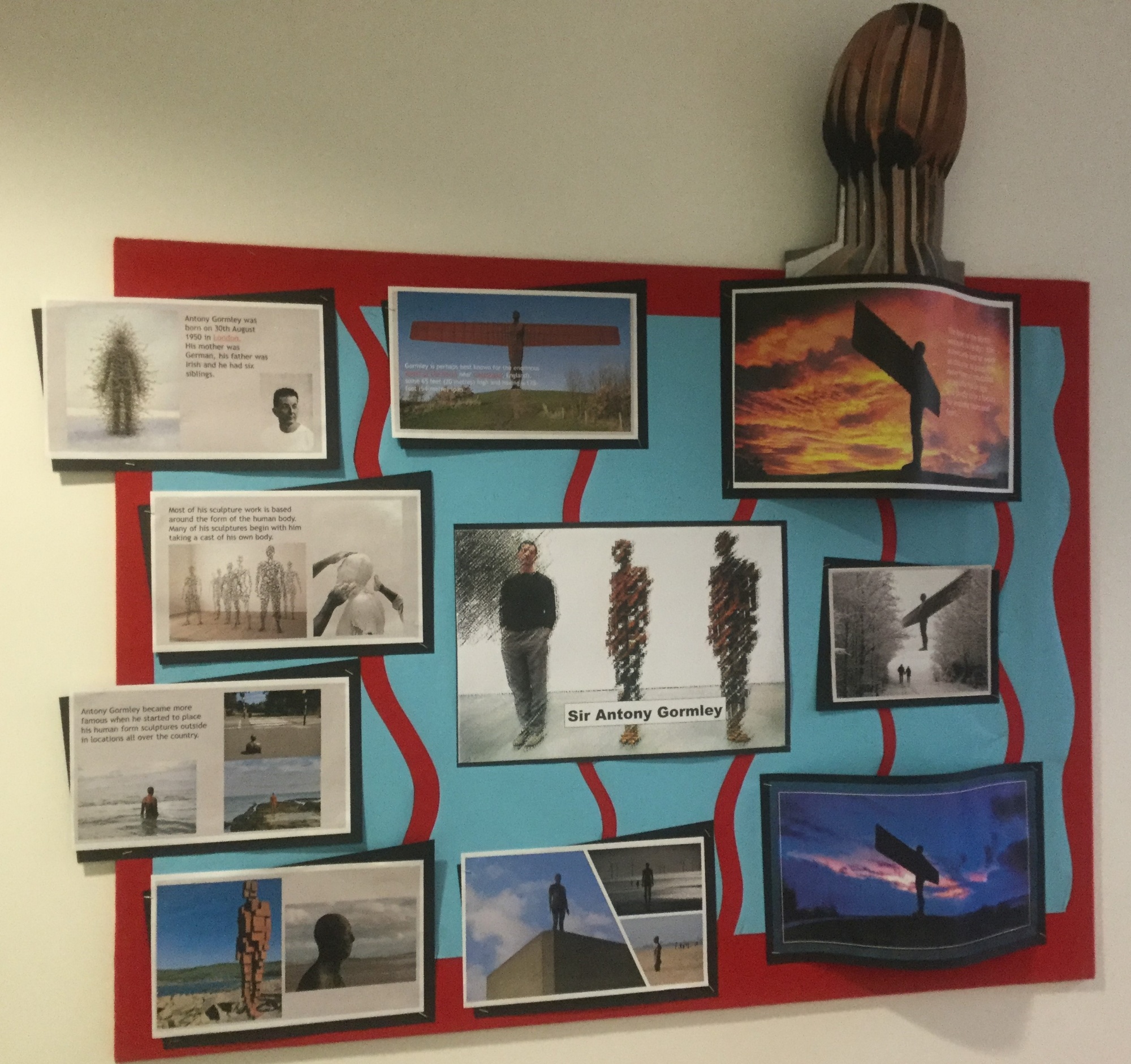
Sir Anthony Gormley display
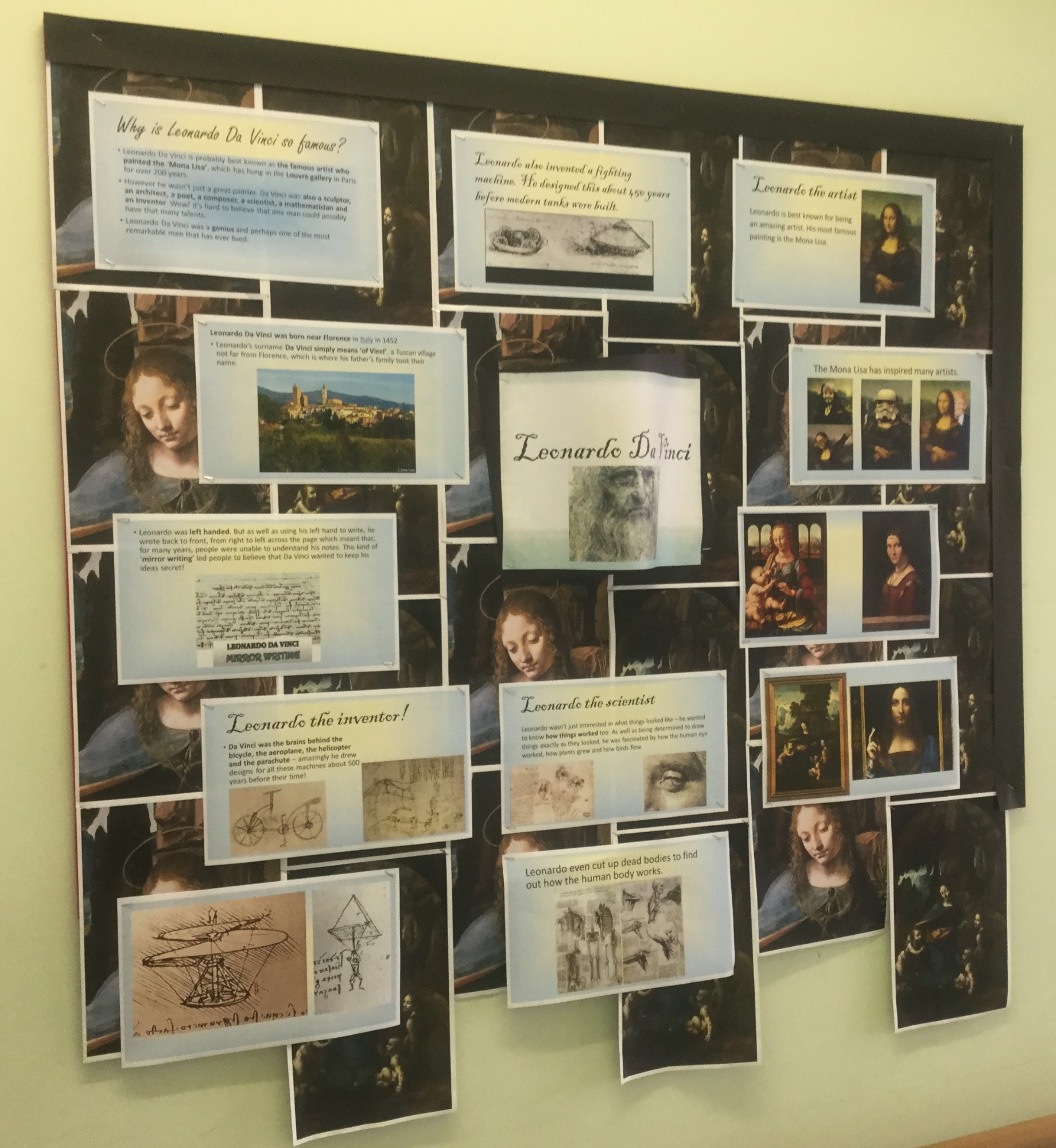
Leonardo Da Vinci display
We are also developing links with the art department at both Rainham Mark and Rainham School for Girls.
Some useful websites to support learning.
Year 6 Resources

